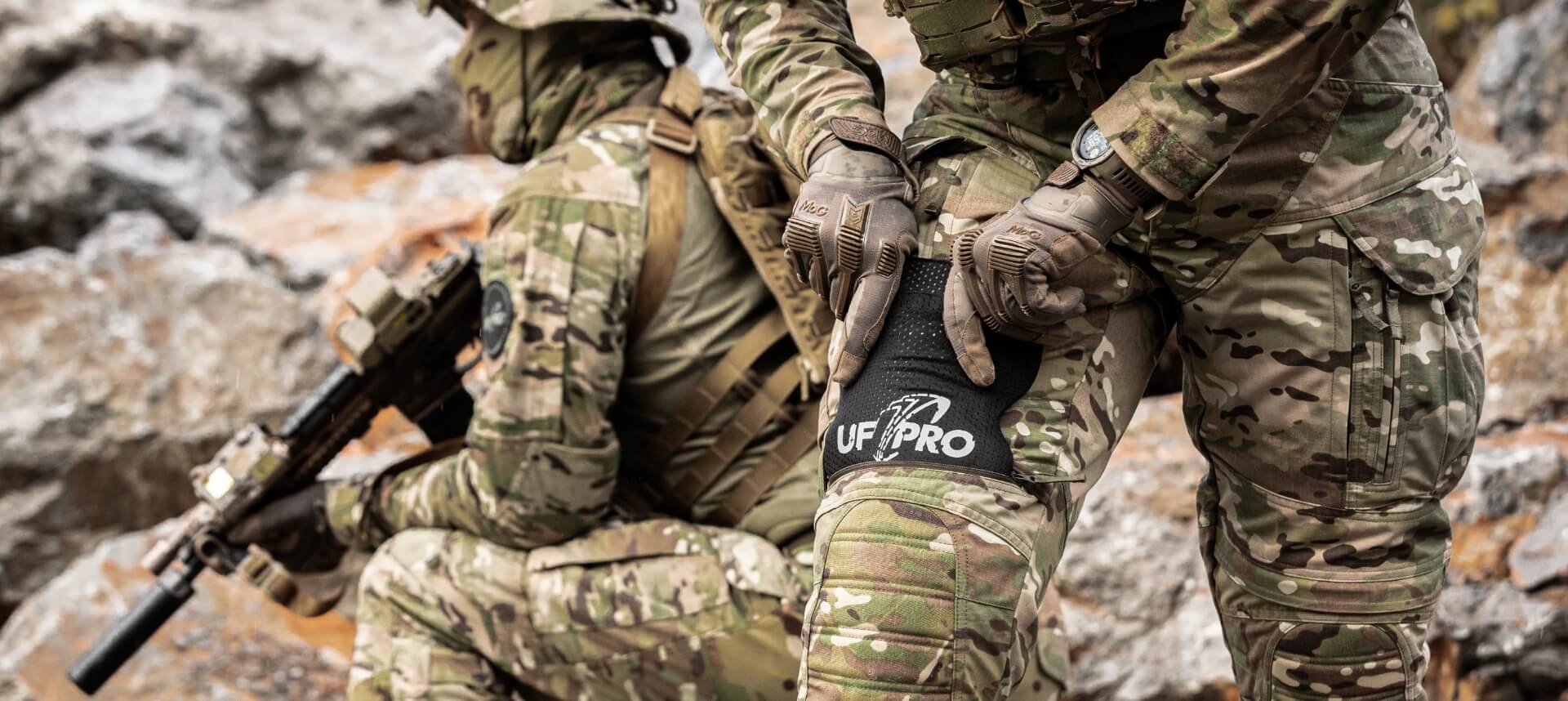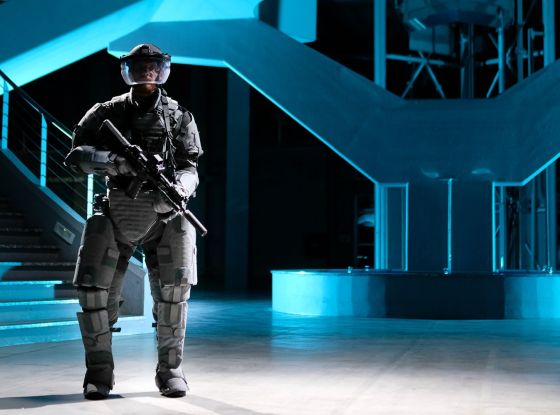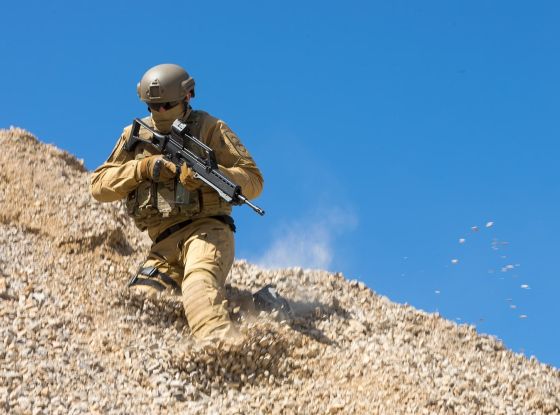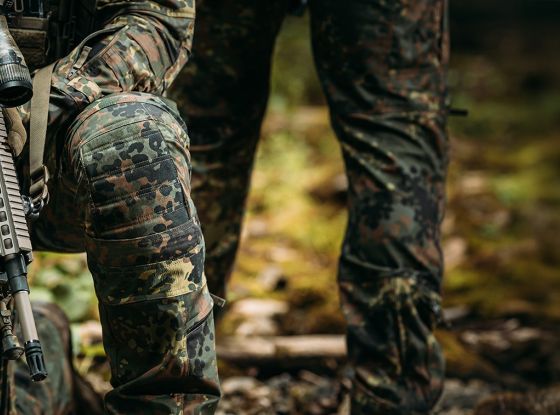Whether you’re a police officer, military personnel, or a special forces operator, your field of operation differs and so does your choice of knee protection. But what are the factors to select the protection you need that can distinguish between smooth operations and hindered performance?
In this blog post:
Your knees are a crucial yet often overlooked part of your skeletal system, enabling mobility. You can think of them as being part of a larger unit, usually able to receive orders and immediately put them into action, helping to achieve a common goal. If part of that system starts to break down, then orders can’t be followed and the success of the mission is endangered. It’s like trying to run after damaging a kneecap - your brain may command it, but the pain overrides the order, and you find yourself hobbling, putting yourself and others in a vulnerable position.
Setting the framework for choosing the right knee pads and combat pants for your mission
Whether you’re a police, military, or special forces operator, your field of operation differs. To help protect your knees and body as a system, you need to consider the challenges they face from different angles and the various factors that influence them. First, identify the variables that have an extreme and immediate impact, and then those that have a smaller effect that can become more significant over time.
To simplify the process and prioritize what is most important, start by thinking about your knees and everything that affects them internally and externally during your missions and off duty. Then assess how these factors can affect your overall performance.
Internally, consider factors such as knee sensitivity, past injuries, bruising tendencies, and pain tolerance. From an external perspective, consider factors like the prevailing weather conditions and terrain, as well as the design and materials of your combat pants, the fit of knee pockets and pads, and the condition of your knees and skin. When selecting knee protection and combat pants, you’ll need to take into account the specific requirements of the mission, operational environment, and gear, and of course your individual needs as an operator.
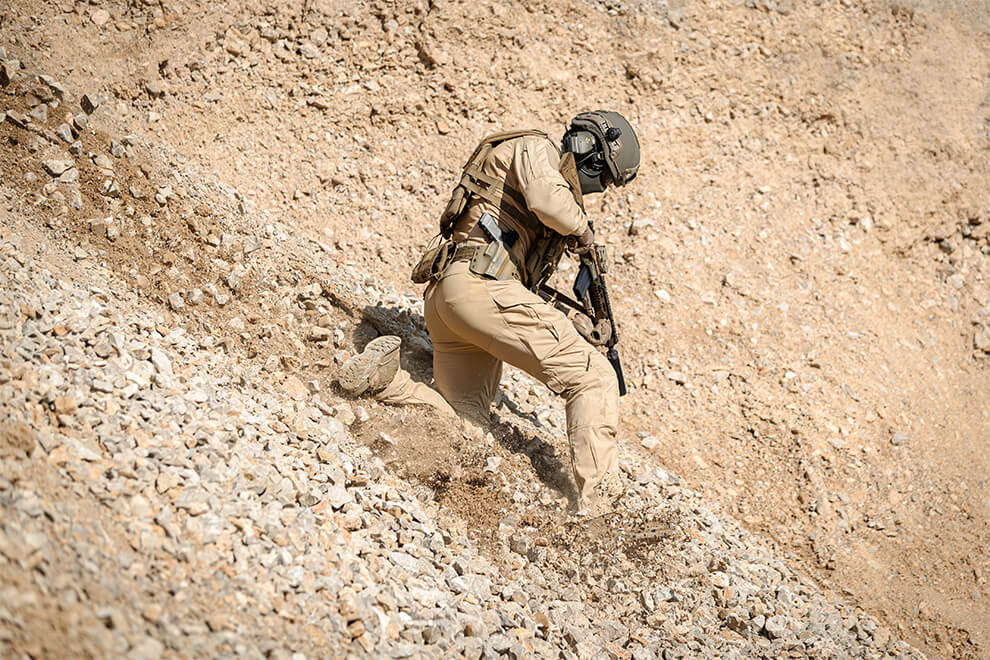
SUBSCRIBE TO UNLOCK OUR EXCLUSIVE CONTENT
Enter your email and get timely updates and relevant intel on tactical topics directly to your inbox.
You are signing up to receive updates via e-mail from which you can opt out at any time. Visit our privacy policy for more info.
What factors to consider when choosing the right knee protection for your specific needs
Mission specific demands
Choosing the optimal level of knee protection that works well with your combat pants and other gear depends on the specific requirements of each mission and your role in the unit. The activities in reconnaissance differ greatly from those in direct action or humanitarian assistance, so your choice of protection should follow the challenges your knees will face. For instance, if you anticipate spending hours kneeling on rocky terrain to gather information, it is advisable to opt for full protection, including shock-absorbing pads with solid and memory foam padding in combination with cushioned knees on your pants for added comfort. In contrast, when marching cushioned knees on your pants will suffice, and you’ll find pants without sturdy seams, especially at the back of the knee, more comfortable in the long run.
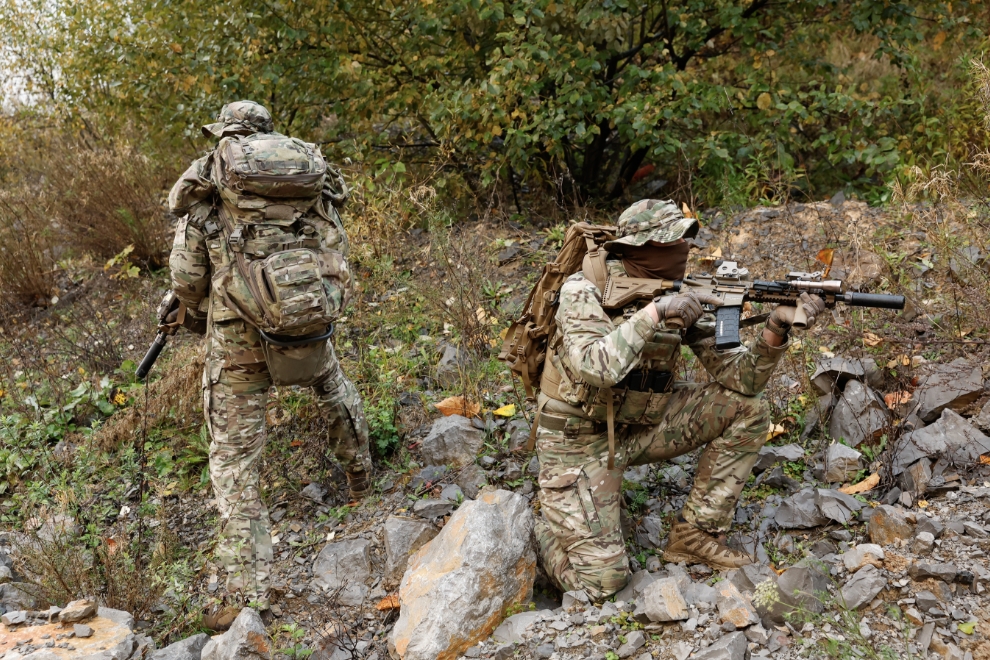
Outside conditions
When working in various geographical and climatic conditions, it is important to consider the different challenges you may encounter. These can include extreme temperatures, such as hot asphalt or icy terrains, as well as the spiky vegetation or sharp objects commonly found in desert or urban or environments. Each of these conditions requires specific knee protection to prevent burns, frostbite, puncture wounds, or abrasions, and solid knee pads can help mitigate the first three of these.
To prevent abrasion wounds, however, a combination of fast-drying and soft-to-touch materials is recommended. Whether you opt for a snug or loose fit around your knees greatly depends on your personal preferences. That said, for walking on flat terrain a loose fit is often the preferred choice, but for hiking or climbing many opt for a snug fit if the pants are designed to stretch well. Additionally, lightweight knee pads that fit perfectly in the knee pocket are usually the best option under these conditions.
Threat level scenarios
In high enemy threat scenarios you’ll require a different combination of agility, protection, and equipment compared to low-threat scenarios. In high threat-situations the combat pant’s knee fit and actual position must remain on your knees, regardless of how much you stretch your moves. The anatomical shape, position and stability within the knee-pad pockets ensure optimal protection while in motion. And the faster you need to move, the more your combat pants with knee pads should feel like a second skin, while still being able to protect your knees when you land on them carrying a full set of gear. To account for variations in gear weight, it’s recommended that you test the amount and layering of knee protection before any upcoming mission, doing so while wearing all the equipment you’ll need with you.
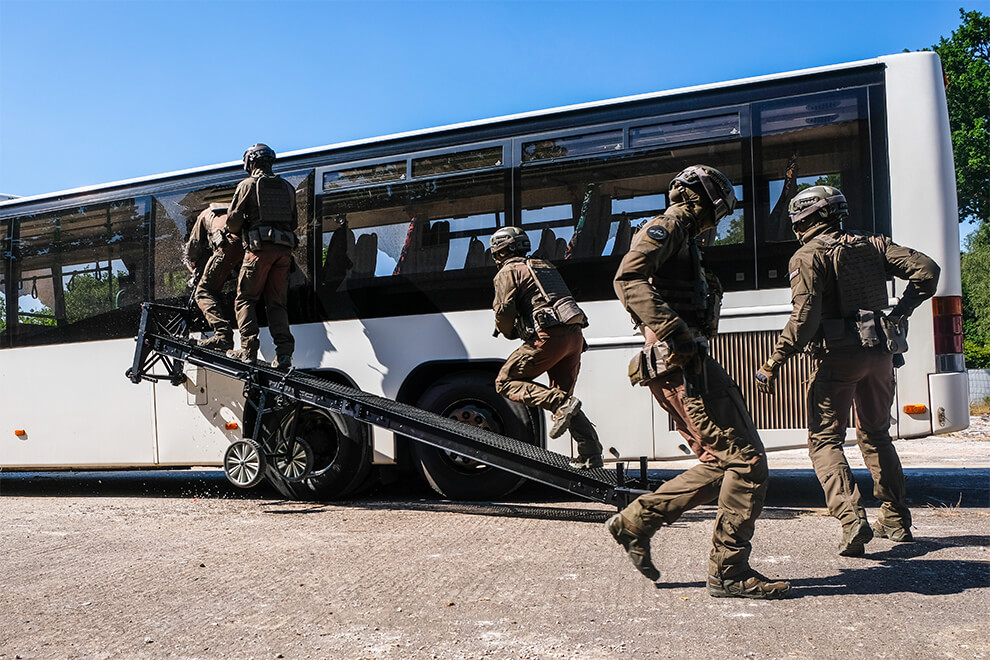
Duration of the mission
The duration of the mission will significantly impact you both physically and mentally. Extended deployments also require careful consideration of sustained endurance, logistical support, and mental resilience. If logistical support is provided, it may be a good idea to bring an extra pair of knee pads. In situations where sustained endurance is required and communication, medical support, and transportation are not available, it is crucial to prioritize minimizing weight while maximizing the comfort and durability of knee pads and pants. Your selection should thus focus on lightweight options with either memory foam for added comfort or shock-absorbent knee protectors that better distribute point forces from impacts.
Mission dynamics
When choosing your combat pants and knee protection combo for complex and dynamic military situations, it is important to consider several factors to ensure they meet the specific needs of the mission and operational environment, along with the rules of engagement. Firstly, you need to decide between knee protectors that can be worn on top of your combat pants or insert pads. One common drawback of using knee protectors is that they may slide down and rotate. If you choose to wear them on top of your combat pants, you’ll likely need to ensure they are in the appropriate concealment color. However, with inserts, you don't need to worry about color and position, unless wearing baggy combat pants.
Here are some more guidelines for choosing knee pads for the most dynamic and demanding scenarios:
- Stealth and low profile: If you’re using knee pads on top of your pants, choose the kind that are low profile and do not create unnecessary noise or hinder movement. The goal is to maintain stealth and agility during operations, where noise or visibility could compromise the mission.
- Impact protection: Opt for knee pads that provide effective impact protection. In dynamic situations, you may encounter uneven terrain, obstacles, or sudden drops, making reliable impact resistance essential for knee safety.
- Quick deployment: Select knee pads that are easy and quick to deploy. In fast-paced situations, you may need to transition from different positions rapidly, and knee pads that can be adjusted or put on efficiently contribute to greater operational effectiveness.
- Durability: Prioritize durable knee pads made from high-quality materials. The knee pads should withstand the many and varied rigors of combat environments, including rough terrain, abrasive surfaces, and potential encounters with hostile elements.
- Compatibility with uniform: Ensure that the knee pads are compatible with the operational uniform and gear you will be using. They should integrate seamlessly with the uniform without impeding movement or causing discomfort.
- Flexibility and range of motion: Look for knee pads that allow a full range of motion. Flexibility is crucial for operators who may need to perform various physical tasks during dynamic situations, such as kneeling, crawling, or climbing.
- Secure fit: Choose knee pads with a secure and adjustable fit. The pads should stay in place during intense movements and not shift, slide or rotate, providing constant protection without requiring frequent adjustments and distraction.
- Weight considerations: Consider the overall weight of the knee pads. Lightweight options are preferred when possible, as they contribute to agility and reduce the burden on the operator, especially during prolonged missions.
- Camouflage and concealment: If you wear knee protection on top of your combat trousers, select knee pads that blend with the operational environment and uniform. Camouflage patterns or subdued colors can contribute to concealment, aligning with the need for operational discretion.
- Noise reduction: Choose knee pads that minimize noise during movement. In situations where silence is critical, avoiding loud, clunky knee pads is essential for maintaining operational security.
- Quick removal: Look for knee pads that can be quickly removed when necessary. Situations may arise where rapid adjustments to gear are required, and knee pads that can be swiftly taken off increase operational flexibility.
- Comfort: Prioritize comfort to enhance your focus and endurance during extended missions. Padding, breathable materials, and ergonomic design all contribute to the overall comfort of the knee pads.
UF PRO modular knee pad system
Our knee pad system is designed to provide exceptional comfort, to the point where you'll forget you're even wearing them. This modular system offers customizable padding levels and stays securely in place once adjusted, eliminating the need for frequent readjustments and letting you focus on the job. Not only are they lightweight and reliable, but you can wear them with all UF PRO Combat Pants, high-quality clothing made especially for highly demanding military special operations personnel.
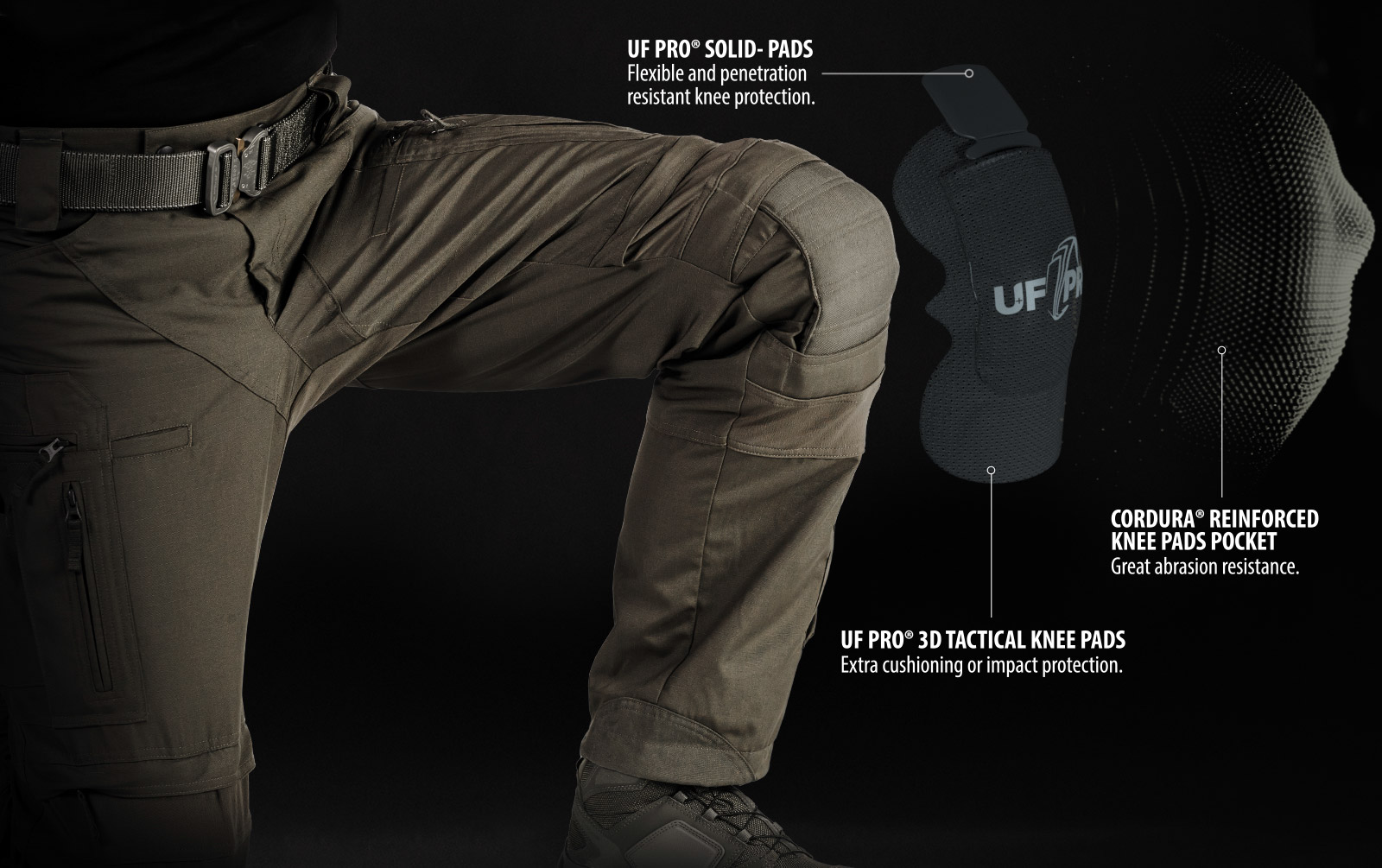
Solid knee pads
These protect your knees from sharp objects, such as needles or screws. You can use them with slightly padded Striker X Gen.2 Combat Pants and enhancing the system with 3D Tactical Knee Pads.
3D Tactical Knee Pads:
- IMPACT
The IMPACT version of our knee pads is made of special material that gives you comfort and maximum protection when you need it most. Under normal conditions each pad is highly flexible. But upon impact they stiffen to keep your knees safe.
- CUSHION
The CUSHION version employs a unique material very much like memory foam, so you enjoy superior comfort whenever you rest on your knees, even while loaded down with a heavy pack or other equipment.
Conclusion
In short, the selection of knee pads designed for specific purposes is far more important than may seem at first glance, as they are a strategic investment in your physical well-being and operational effectiveness. By choosing a lightweight pair with advanced features like memory foam or shock-absorbent protectors, you not only minimize the burden on your body but also prioritize enduring comfort, ensuring you're well-equipped to navigate the varied and exacting demands of any mission with resilience and efficiency.

